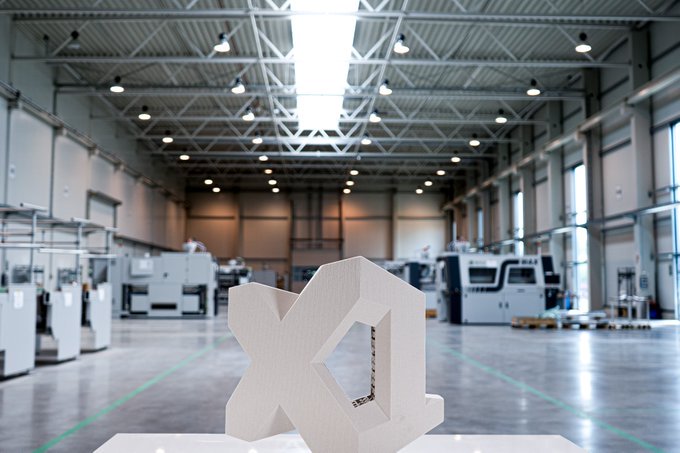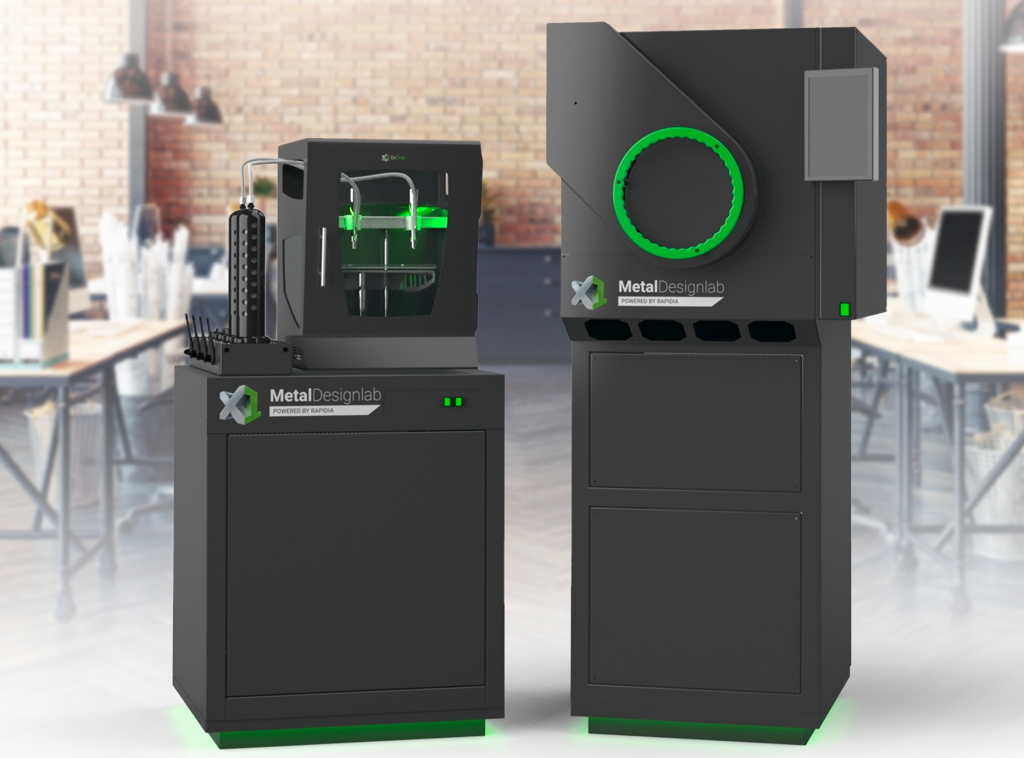Binder jetting 3D printer manufacturer ExOne has predicted that its annual revenue will increase by 10-12% in its provisional Q4 2020 financials.
For the three months ending December 31st 2020, the company expects to have generated revenue of $17.0 to $17.5 million, which would constitute a 10-12% increase compared to Q4 2019. The better than expected results follow the unveiling of a ‘strategic partnership’ with Rapidia that will effectively see ExOne market its ‘two-step’ 3D printing machines.
Together, the announcements have caused ExOne’s share price to rise by 35%, increasing from $44.37 to $55.26 by close of trade on Monday. According to John Hartner, CEO of ExOne, the company is now in an optimal position to build on its portfolio, starting with the launch of the new Rapidia-powered systems.
“We are excited about the opportunities ahead of us in 2021 as we continue to expand our product portfolio,” said Hartner. “Given our enhanced liquidity position and current market conditions, we believe 2021 is the right time to accelerate investments in our technology and commercial infrastructure to optimize our future growth.”

ExOne’s Q4 2020 revenue guidance
Based on its preliminary financial data, ExOne expects that despite the ongoing challenges presented by COVID-19, it will generate a gross margin of 21-22% for Q4 2020. The company is also set to outstrip its initial Q4 revenue outlook of $16.74 million, and it now anticipates that it will achieve annual revenue growth of 15-25% for the coming year.
Although ExOne won’t release its full financials until March 11th 2020, and the figures aren’t final, it has stated that it expects its expanded product portfolio to drive future growth. While the pandemic’s direction could still impact on these projections, the company did deliver a 60% revenue increase in Q3 2020, thus achieving them would be consistent with its recent financial performance.
Desktop Metal’s decision to go public last year has also contributed to a resurgence of interest in binder jetting technologies, something that has been reflected in the success of its rivals like ExOne and voxeljet. Leveraging this goodwill, its new portfolio of machines and cash liquidity that’s tripled to $60 million, the company now aims to grow its market share in 2021.
“We are pleased to have achieved top-line growth in excess of 20% in the second half of 2020, particularly with the backdrop of COVID-19 and considering the challenges that other AM peers reported over the last year,” said Hartner. “This performance reflects the strength of our binder jetting solutions and the execution of our global team.”

The ‘exclusive partnership’ with Rapidia
ExOne announced its Q4 financial guidance alongside an exclusive partnership with Canadian 3D printer OEM Rapidia. So far, the deal has seen the companies collaborate to launch both the X1F furnace and Metal Designlab system, the latter of which incorporates Rapidia’s proprietary ‘two-step’ 3D printing technology.
Unveiled by Rapidia in 2019, the technique was the first to allow water-bound metal and ceramic parts to go directly from a 3D printer into a furnace without requiring a debinding step. Through the firms’ agreement, ExOne will now be able to leverage the technology to broaden its offering to clients, as well as bolstering its own capabilities.
The deal also gives ExOne first refusal over any acquisition of its Vancouver-based partner, and sees its founder and serial entrepreneur Dan Gelbart join as a ‘technology advisor.’ In his new role, Gelbart will drive further R&D of the new two new machines, which are now available to order with shipping to begin in Q2 2021.
“We’re excited to leverage ExOne’s global marketing and sales team to help customers around the world enjoy the benefits of our revolutionary technology,” said Gelbart. “I also expect a lot of innovation to come from combining the deep technical knowledge of both companies.”
ExOne’s metal 3D printing competitors
According to ExOne, it’s new Rapidia-powered machines are designed to “compete directly with other bound metal 3D printing systems.” This pits the Metal Designlab 3D printer against Desktop Metal’s new Studio System 2, which also features a streamlined two-step 3D printing process, based on a core printer and furnace unit.
Like the Metal Designlab, the Studio 2 combines the debind-sinter stage into one, reducing the system’s footprint while eliminating any need for the use of harmful chemicals. Elsewhere, ExOne has also stated that with its new system, it aims to challenge Markforged’s Metal X 3D printer, which was launched back in 2017.
Parts produced using the Metal X feature a waxy polymeric binder, but the system is similar to the Metal Designlab in that it enables the production of metal objects with complex internal structures. By comparison, ExOne’s new 3D printer uses evaporative water-based supports to allow the assembly of similarly intricate parts.
To stay up to date with the latest 3D printing news, don’t forget to subscribe to the 3D Printing Industry newsletter or follow us on Twitter or liking our page on Facebook.
Are you looking for a job in the additive manufacturing industry? Visit 3D Printing Jobs for a selection of roles in the industry.
Featured image shows a 3D printed ExOne logo on display at one of the company’s facilities. Photo via ExOne.


